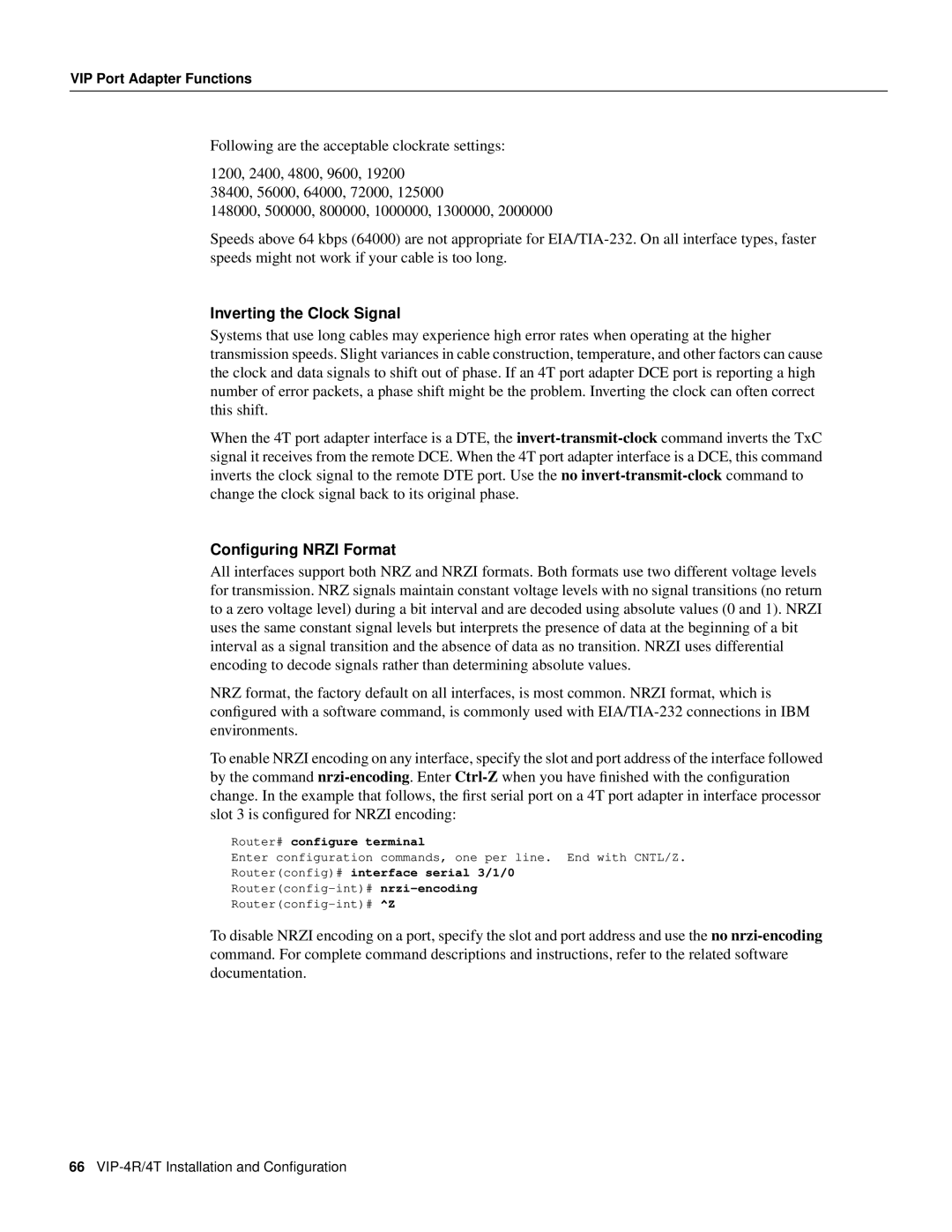VIP Port Adapter Functions
Following are the acceptable clockrate settings:
1200, 2400, 4800, 9600, 19200 38400, 56000, 64000, 72000, 125000
148000, 500000, 800000, 1000000, 1300000, 2000000
Speeds above 64 kbps (64000) are not appropriate for
Inverting the Clock Signal
Systems that use long cables may experience high error rates when operating at the higher transmission speeds. Slight variances in cable construction, temperature, and other factors can cause the clock and data signals to shift out of phase. If an 4T port adapter DCE port is reporting a high number of error packets, a phase shift might be the problem. Inverting the clock can often correct this shift.
When the 4T port adapter interface is a DTE, the
Configuring NRZI Format
All interfaces support both NRZ and NRZI formats. Both formats use two different voltage levels for transmission. NRZ signals maintain constant voltage levels with no signal transitions (no return to a zero voltage level) during a bit interval and are decoded using absolute values (0 and 1). NRZI uses the same constant signal levels but interprets the presence of data at the beginning of a bit interval as a signal transition and the absence of data as no transition. NRZI uses differential encoding to decode signals rather than determining absolute values.
NRZ format, the factory default on all interfaces, is most common. NRZI format, which is configured with a software command, is commonly used with
To enable NRZI encoding on any interface, specify the slot and port address of the interface followed by the command
Router# configure terminal
Enter configuration commands, one per line. End with CNTL/Z.
Router(config)# interface serial 3/1/0
To disable NRZI encoding on a port, specify the slot and port address and use the no
66
